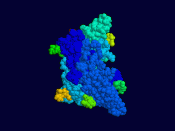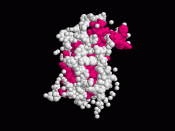The first eighteen years of a person's life are very important in terms of growth. It is during these years that an individual slowly develops from a small, delicate baby, into a strong, mature adult. Growing up in this fashion is not always the case for some children, as many do not reach their full growth potential. In many cases, this is hereditary, and cannot be avoided, but sometimes, short stature is a disease that can be treated, and to a point cured. This disease is called pituitary dwarfism or more commonly known as growth hormone deficiency. To fully understand pituitary dwarfism, it's symptoms, causes, and treatments, one must first understand the significance of the pituitary gland, the function of hormones and the role of growth hormone in the human growth process.
The pituitary is a small bean-shaped, reddish-gray organ located in the saddle-shaped depression (sella turcica) in the floor of the skull (the sphenoid bone) and attached to the base of the brain by a stalk .
The gland is comprised of two segments, the anterior (front) and posterior (back) lobes. The posterior lobe makes up 25% while the anterior lobe accounts for the remaining 75% of the gland. Even though both lobes together are only about the size of a small acorn, they represent a major player in the endocrine system. Because it releases the major hormones involved in growth, we will be concerned only with the anterior section of the gland. The major function of the anterior pituitary is tropic. This suffix is used to point out hormones that affect other glands and organs. The anterior pituitary produces six vital tropic hormones:
Thyroid-stimulating hormone (TSH)
Adrenocorticotropic hormone (ACTH)
Follicle-stimulating hormone (FSH)
Luteinizing hormone (LH)
Lactotropic Hormone (LTH)
Growth Hormone (GH)
The most important of these hormones in...


